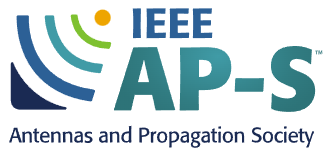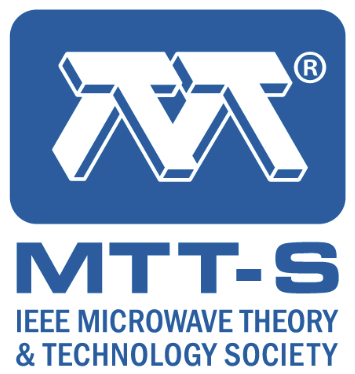CLASTECH 2025

CLASTECH will be at the Eravant Facility this year. We will have a 4 speakers on Microwave and Antenna topics. There will be a box lunch from Panera Bread.
Space is limited - no onsite registration
List of Speakers:
1- Prof. Mark Rodwell, Electrical and Computer Engineering Department, UCSB, "100-300 GHz Wireless: Transistor, ICS, Systems"
2- Tom Murphey, CTO Opterus R&D Inc., “Novel Deployable Apertures Utilizing High Strain Composite Materials”
3- Dr. C. J. Reddy, 2025 IEEE AP-S President Elect, "Antenna Placement, Co-site Interference and RCS Simulations for Air, Sea and Ground Platforms"
4- Prof. Cristiano Tomassoni, Department of Engineering, University of Perugia, Italy, “Additive Manufacturing: Emerging Opportunities for Microwave Components"
Here is a link about Eravant https://www.eravant.com/
Date and Time
Location
Hosts
Registration
-
 Add Event to Calendar
Add Event to Calendar
- Starts 19 August 2025 07:00 AM UTC
- Ends 14 November 2025 08:00 AM UTC
- Admission fee ?
Speakers
UCSB
100-300 GHz Wireless: Transistor, ICS, Systems
We describe the opportunities, and the research challenges, presented in the development of 100-300GHz wireless communications and imaging systems. In such links, short wavelengths permit massive spatial multiplexing both for network nodes and point-point links, permitting aggregate transmission capacities approaching 1Tb/s. 100-300GHz radar imaging systems can provide thousands of image pixels and sub-degree angular resolution from small apertures, supporting foul-weather driving and aviation. Challenges include the mm-wave IC designs, the physical design of the front-end modules, the complexity of the back-end digital beamformer required for spatial multiplexing, and, for imaging, the development of system architectures requiring far fewer RF channels than the number of image pixels. We will describe transistor development, IC design, and system design, and describe our efforts to develop 140GHz massive MIMO wireless hubs, and 210GHz and 280GHz MIMO backhaul links.
Biography:
Mark Rodwell holds the Doluca Family Endowed Chair in Electrical and Computer Engineering at UCSB and directs the SRC/DARPA Center for Converged TeraHertz Communications and Sensing. His research group develops nm and THz transistors, and high-frequency integrated circuits and systems. Prof. Rodwell received the 2010 IEEE Sarnoff Award, the 2012 Marconi Prize Paper Award, the 1997 IEEE Microwave Prize, the 2009 IEEE IPRM Conference Award, and the 1998 European Microwave Conference Microwave Prize.
Address:United States
Opterus R&D
Novel Deployable Apertures Utilizing High Strain Composite Materials
Opterus specializes in advanced deployable structures, primarily utilizing High Strain Composite (HSC) materials. Using these materials with unique folding patterns, Opterus has developed novel deployable apertures that provide advantages over current state-of-the-art antennas. One example is Opterus’ patented Spiral Wrapped Antenna Technology (SWATH) — a fully continuous, solid surface deployable parabolic reflector architecture that enables low-cost, high-frequency communications and radar missions. The antenna stows into a compact form factor for launch and maintains high precision upon deployment. The mold-based manufacturing process reduces cost and shortens lead times while increasing the antenna’s operating frequency. Opterus’ capabilities, deployable aperture architectures, and prototype testing results will be discussed.
Biography:
Tom Murphey is an accomplished leader, scientist, and innovator in the space structures industry with 20 years of experience and an impressive technology commercialization record. Many of his patents and developments have been licensed and are currently used in space or are part of current space flight programs. His pioneering work serves as the foundation for the high strain composites industry through 12 patents and over 70 publications. Murphey is currently the founder and president of Opterus R&D, Inc., a small business focused on 1) rapid innovation in industries requiring advanced structures and 2) the fabrication of high strain composites for folding structures. His aerospace career started at the University of Colorado, Boulder, where he received MS and PhD degrees in mechanical engineering. From there, he founded the US Air Force Research Laboratory’s R&D program for deployable space structures. Murphey’s team developed high strain flexible composite materials and structures to enable elastic folding and unfolding of large space platforms. He developed numerous high strain composite laminates and invented deployable solar sails, solar arrays, RF antennas, phased array antennas, booms, trusses, and telescope structures. More recently, Murphey served as the CTO and Space Chief Technologist for High Strain Dynamics, Inc. and Roccor, Inc., respectively. His areas of expertise include structural mechanics, composites manufacturing, tensioned membrane mechanics, and advanced structural analysis methods.
Address:United States
Antenna Placement, Co-site Interference and RCS Simulations for Air, Sea, and Ground Platforms
Advances in computational electromagnetic tools have made antenna design and integration of antennas on various ground, sea, air, and ground platforms possible. Now numerical simulations can be performed to evaluate the effects of antenna design, placement, radiation hazard, EMC/EMI, etc. for wide ranging defense industry applications. With every platform becoming increasingly connected, the defense industry is no exception with numerous complex communication systems. The use of electromagnetic (EM) simulation technologies to improve design efficiency and reduce physical testing costs continues to be one of the best ways to address engineering challenges in the defense industry. This talk presents simulation solutions and discusses various case studies of antenna placement, co-site interference, and Radar Cross Section (RCS) that apply to the defense industry.
Biography:
Dr. C.J. Reddy is Vice President, Business Development-Electromagnetics for Americas at Altair Engineering, Inc. Dr. Reddy was awarded the Natural Sciences and Engineering Research Council (NSERC) of Canada Visiting Fellowship to work at Communications Research Center in Ottawa during 1991-1993 and was awarded the US National Research Council (NRC) Resident Research Associateship in 1993 to work at NASA Langley Research Center in Hampton, Virginia. He also worked as Research Professor at Hampton University from 1995 to 2000. Dr. Reddy was the President of Applied EM, Inc (2000-2017) where he led several Phase I and Phase II SBIR projects for the DoD and NASA. He was also the President of EM Software & Systems (USA) Inc (2002-2014) and led the marketing of the EM Simulation tool, Feko in North America. EM Software & Systems (USA) Inc was acquired by Altair in 2014.
Dr. Reddy is a Fellow of IEEE, Fellow of ACES (Applied Computational Electromagnetics Society) and a Fellow of AMTA (Antenna Measurement Techniques Association). Dr. Reddy is a co-author of the book, “Antenna Analysis and Design Using FEKO Electromagnetic Simulation Software,” published in June 2014 by SciTech Publishing (now part of IET). Dr. Reddy served as an Associate Editor for IEEE Open Journal of Antennas of Propagation and IEEE Transactions on Antennas and Propagation. He served as the Chair of IEEE Antennas and Propagation Society (AP-S) Young Professionals Committee during 2021-2024 and served on the AP-S AdCom during 2023-2024. Dr. Reddy is appointed to IEEE Fellows Committee by IEEE Board of Directors for the terms 2020-2021 and 2022-2023. Currently, Dr. Reddy is serving as the 2025 IEEE AP-S President-Elect. Dr. Reddy is inducted into IEEE Heritage Circle by the IEEE Foundation for establishing the "IEEE AP-S CJ Reddy Travel Grant for Graduate Students."
Additive Manufacturing: emerging opportunities for microwave components
The Additive Manufacturing (AM) technology, also known as 3D-printing technology, offers several interesting and attractive features, including fast prototyping, geometry flexibility, easily customizable products, and low cost (in some cases). However, using such technologies for microwave devices is not straightforward as AM has not been specifically developed for microwave components, and in most cases, some adaptation and post-processing is necessary. Furthermore, there are many AM technologies available, and it is important to understand their characteristics before selecting one.
In the presentation, an overview of the different AM technologies available will be provided. Additionally, an analysis of some of the most common AM technologies used for the manufacturing of microwave components will be conducted in more detail, with the help of several examples. Several microwave components manufactured with some of the most popular AM technologies will be shown, along with a detailed description of the manufacturing process, post-processing, and all actions necessary to make the component perform well. Furthermore, it will be shown how the flexibility of this technology allows the development of new classes of components with non-conventional geometries that can be exploited to obtain high-performing components in terms of compactness, weight, losses, etc.
Biography:
Cristiano Tomassoni received his Ph.D. in Electronics Engineering from the University of Perugia, Perugia, Italy, in 1999. In the same year, he joined the Lehrstuhl für Hochfrequenztechnik, Technical University of Munich, Munich, Germany as a Visiting Scientist, where he worked on the modeling of waveguide structures and devices using the generalized scattering matrix technique. In 2001, he was a Guest Professor at the Fakultät für Elektrotechnik und Informationstechnik, Otto-von-Guericke University, Magdeburg, Germany. In the early stages of his career, he contributed to the enhancement of several analytical and numerical methods for electromagnetic component simulation, including the finite-element method, mode-matching technique, generalized multipole technique, method of moments, transmission-line matrix, and mode matching applied to spherical waves. In 2001, he joined the University of Perugia, where he is currently an Associate Professor and teaches the ‘Electromagnetic Fields’ course and the ‘Advanced Design of Microwave and RF Systems’ course. His main research interests include modeling and designing of waveguide components and antennas, miniaturized filters, reconfigurable filters, dielectric filters, and substrate integrated waveguide filters. He is currently studying the use of Additive Manufacturing (AM) technology for the fabrication of microwave components, considering various technologies such as Stereolithography (SLA), Lithography-based Ceramic Manufacturing (LCM), Selective Laser Melting (SLM), Fused Deposition Modeling (FDM), and PolyJet technology.
Prof. Tomassoni has been elevated to the grade of IEEE Fellow, Class of 2025. He serves as the Chair of the MTT-5 Filters Technical Committee of the IEEE MTT-S. Currently, he is a Distinguished Lecturer for the IEEE MTT-S. From 2018 to 2022, he served as an Associate Editor for the IEEE Transactions on Microwave Theory and Techniques. Prof. Tomassoni is also the recipient of the 2012 Microwave Prize, awarded by the IEEE Microwave Theory and Techniques Society.
Agenda
9:00 AM 1st Session
Prof. Mark Rodwell, Electrical and Computer Engineering Department, UCSB, "100-300 GHz Wireless: Transistor, ICS, Systems"
10:00 - 10:30 AM Break
(Exhibit Opens at 8:30 AM)
10:30 AM 2nd Session
Tom Murphey, CTO Opterus R&D Inc., "Novel Deployable Apertures Utilizing High Strain Composite Materials"
11:30 AM - 1:00 PM Lunch
1:00 PM - 2:00 PM 3rd Session
Dr. C. J. Reddy, 2025 IEEE AP-S President Elect, "Antenna Placement, Co-site Interference and RCS Simulations for Air, Sea and Ground Platforms"
2:00 - 2:30 PM Break
(Exhibition Closes at 3:30 PM)
2:30 PM - 3:30 PM 4th Session
Prof. Cristiano Tomassoni, Department of Engineering, University of Perugia, Italy, "Additive Manufacturing: Emerging Opportunities for Microwave Components"


